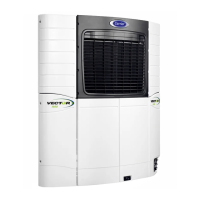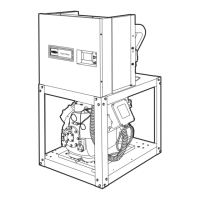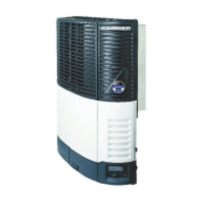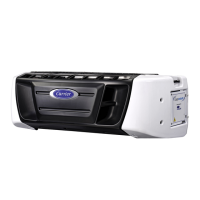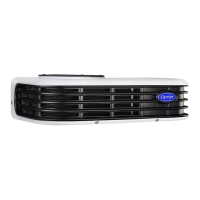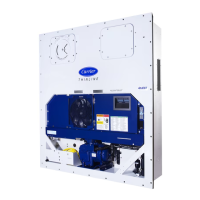7−74
62-11389
Alarm
NO.
Steps Alarm/Cause Corrective Action
133 CHECK REMOTE TEMP SENSOR 1
134 CHECK REMOTE TEMP SENSOR 2
135 CHECK REMOTE TEMP SENSOR 3
• TRIGGER–ON: Remote Temperature Sensor (REMSN1, REMSN2 or REMSN3) is not within the
range of -53 to +158°F (-47 to +70°C.)
• UNIT CONTROL: Engine and Standby Operation: Alarm only.
• RESET CONDITION: Auto Reset when Remote Temperature Sensor is in range or, alarm may be
manually reset via keypad or by turning the unit off, then back on again.
NOTE: Follow the steps below until a problem is found. Once a repair or correction has been made, the active
alarm should clear itself (see reset condition above). Operate the unit through the appropriate modes to see if
any active alarm occurs. Continue with the steps below as necessary.
IF A SENSOR IS INSTALLED
1 Check Sensor
a. Inspect sensor & connector. No damage to sensor.
No damage, moisture, or corrosion in connector.
b. Check Remote Temp Sensor
resistance (See Note 3, page
7−2.)
10,000 Ohms @ 77°F (25°C.) See Table 8−5 for
complete table of temperatures and resistance
values.
2 Check Wiring
a. Inspect harness & control box
connector pins & terminals. (1MP
& REM,SN see wiring schematic
Section 10.)
No physical damage to harness.
No damage, moisture, or corrosion in connectors.
b. Power up the microprocessor (see
Note 2 page 7−2). Disconnect
sensor from harness. Check for
2.5 VDC at harness plug between
pins.
Voltage should be 2.5 VDC volts at harness plug be-
tween pins. This verifies microprocessor output and
wiring connections to sensor.
IF A SENSOR IS NOT INSTALLED
Locate and inspect 10 position con-
nector for optional sensors and
switches (REMSN, see wiring sche-
matic Section 10).
Connector must have cap on,
No corrosion or moisture inside connector.
If there is a problem with the connector and there are
no remote sensors or switches in the unit, the con-
nector may be removed and each individual wire sep-
arated from the others, terminated and insulated with
heat shrink.
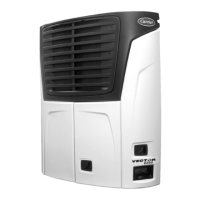
